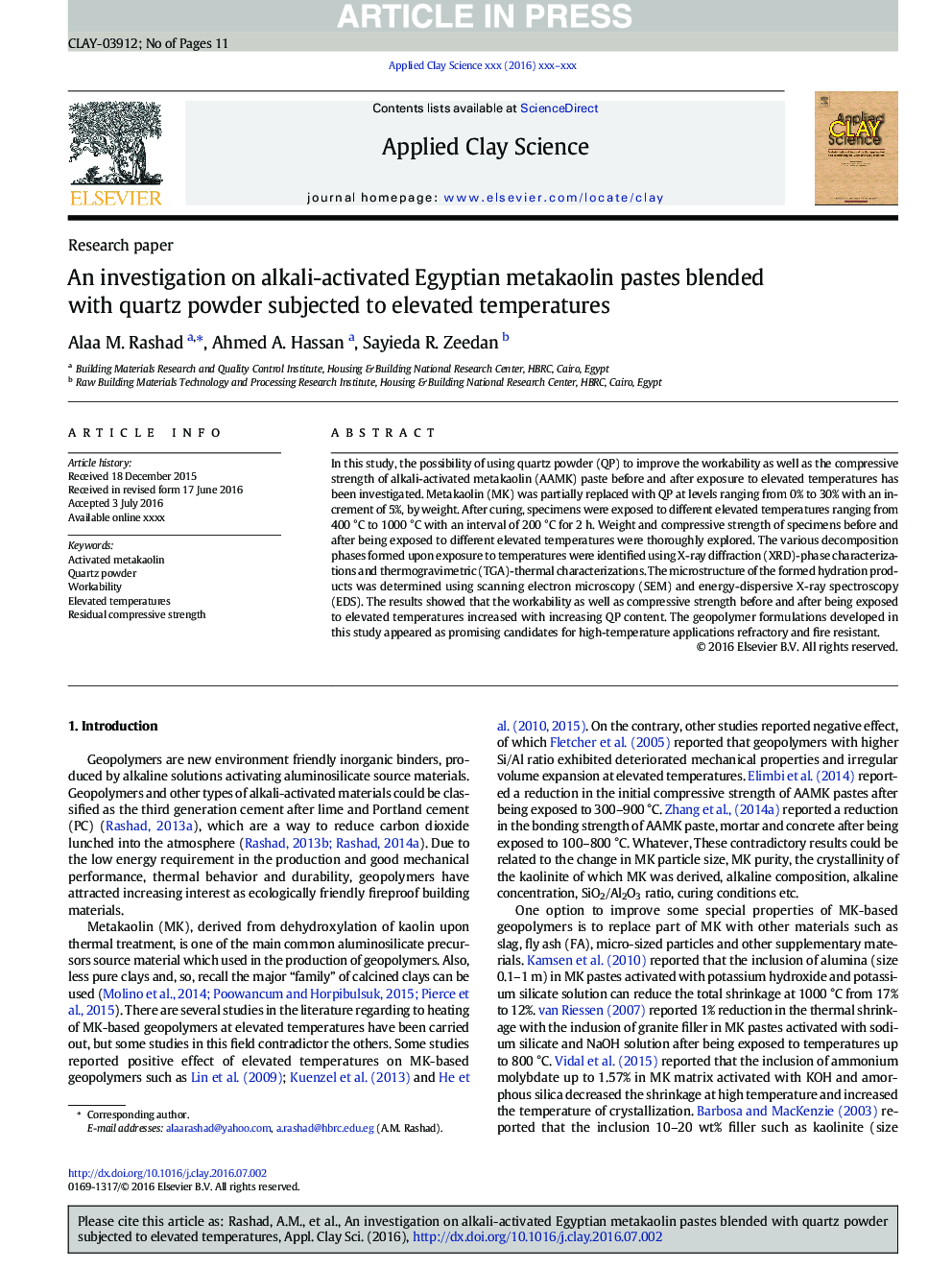| Article ID | Journal | Published Year | Pages | File Type |
|---|---|---|---|---|
| 5468768 | Applied Clay Science | 2016 | 11 Pages |
Abstract
In this study, the possibility of using quartz powder (QP) to improve the workability as well as the compressive strength of alkali-activated metakaolin (AAMK) paste before and after exposure to elevated temperatures has been investigated. Metakaolin (MK) was partially replaced with QP at levels ranging from 0% to 30% with an increment of 5%, by weight. After curing, specimens were exposed to different elevated temperatures ranging from 400 °C to 1000 °C with an interval of 200 °C for 2 h. Weight and compressive strength of specimens before and after being exposed to different elevated temperatures were thoroughly explored. The various decomposition phases formed upon exposure to temperatures were identified using X-ray diffraction (XRD)-phase characterizations and thermogravimetric (TGA)-thermal characterizations. The microstructure of the formed hydration products was determined using scanning electron microscopy (SEM) and energy-dispersive X-ray spectroscopy (EDS). The results showed that the workability as well as compressive strength before and after being exposed to elevated temperatures increased with increasing QP content. The geopolymer formulations developed in this study appeared as promising candidates for high-temperature applications refractory and fire resistant.
Related Topics
Physical Sciences and Engineering
Earth and Planetary Sciences
Geochemistry and Petrology
Authors
Alaa M. Rashad, Ahmed A. Hassan, Sayieda R. Zeedan,
